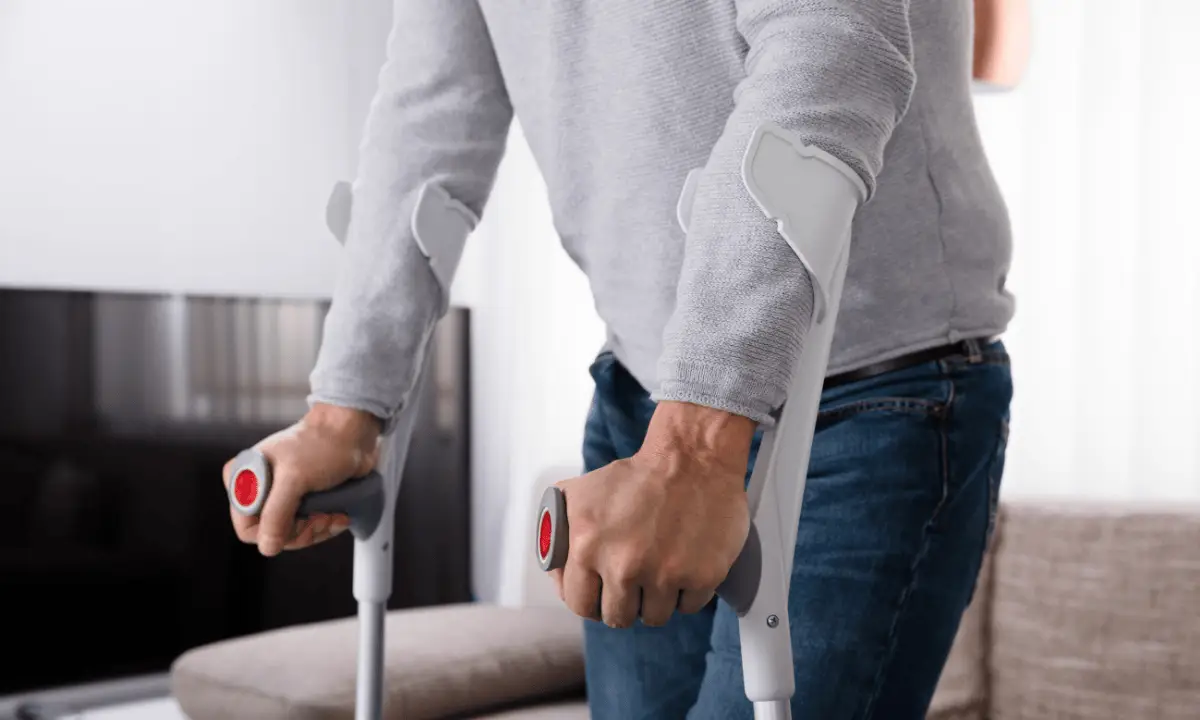A crush injury at work can change everything in an instant. Whether it happened on a construction site, in a warehouse, or in a factory, the impact goes far beyond the physical pain. You may be facing time off work, rising medical bills, and questions about your future. It’s normal to feel overwhelmed, but you don’t have to face it alone. If you’re wondering whether you’re eligible for a crush injury compensation claim in NSW, or what kind of workers compensation or payout you could receive, this guide is for you.
At Withstand Lawyers, we specialise in helping injured workers access the crush injury compensation they deserve. As experienced crush injury lawyers, we understand the challenges you’re facing and are here to support you through your workplace crush injury claim. From the initial legal advice, to the final settlement, we’re here. And with our no win no fee policy, you won’t pay unless we win your case. Read on to find out how we can help you claim compensation for your crush injury after a workplace accident.
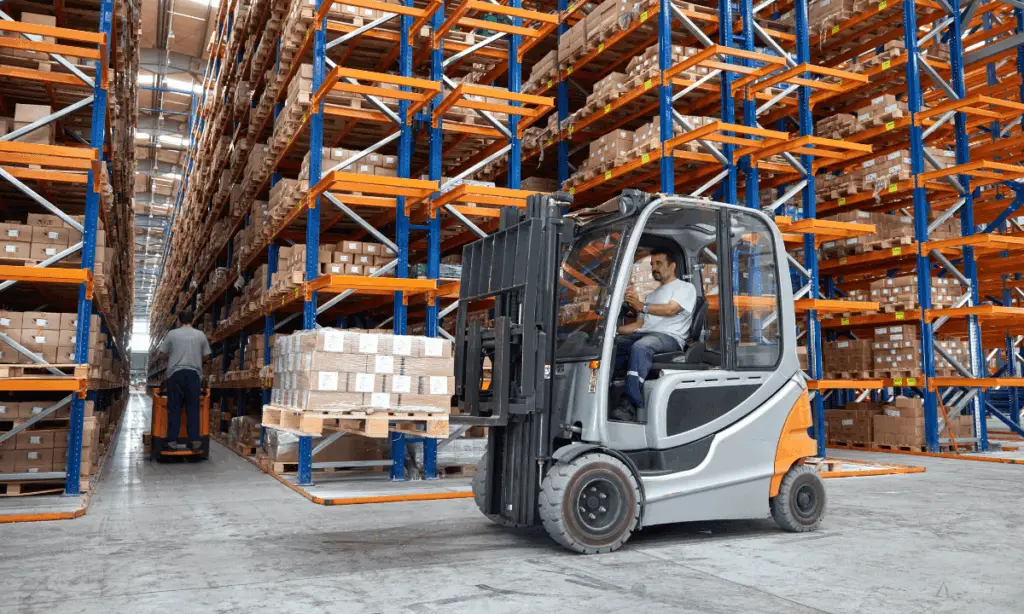
What Is a Crush Injury and How Do They Occur at Work?
A crush injury happens when a part of the body is subjected to extreme pressure, usually between two heavy objects. In the workplace, this often results in serious damage to muscles, nerves, bones, and blood vessels. These injuries are not only physically devastating but can also lead to long term disability, psychological trauma, and significant loss of income.
If you’ve experienced a crush injury at work, you may be eligible to make a crush injury compensation claim through workers compensation in NSW.
Understanding how these injuries occur and where they’re most likely to happen is the first step toward securing your rights and recovery.
Common Workplace Accidents Leading to Crush Injuries
Crush injuries often result from preventable incidents. Some of the most common workplace accidents that result in a crush injury include:
Machinery Malfunctions: Unguarded or poorly maintained machines can trap hands, fingers, or limbs, causing severe crush injuries.
Falling Objects: Items falling from shelves or scaffolding can crush a worker below, especially if proper load restraints aren’t used.
Vehicle Incidents: Forklifts, trucks, and other heavy vehicles can trap workers between vehicles or against fixed structures.
Collapsed Structures or Trenches: In construction and mining, sudden structural failures can bury or trap workers.
Improper Lifting Techniques: Heavy lifting done without support or correct training can lead to dropped loads, crushing a part of the body, such as the legs and feet.
Each of these workplace incidents may give rise to a crush injury compensation claim under NSW workers compensation law. Since it is a no-fault workers compensation scheme, you may be entitled to claim compensation regardless of who caused the accident.
However, if your crush injury resulted from someone else’s negligence, such as your employer, you may also be eligible to make a work injury damages claim for a payout beyond your workers compensation entitlements.
Click here to learn more about making a work injury damages claim after a crush injury at work.
High-Risk Industries for Crush Injuries
Certain industries in Australia have higher rates of crush injuries due to the nature of the work. These include:
Construction: With frequent use of heavy machinery, scaffolding, and materials handling, crush injuries are a common risk on construction sites.
Manufacturing: Fast-paced environments with automated equipment and conveyor belts increase the likelihood of crush related incidents.
Mining and Resources: Heavy duty machinery, confined spaces, and unstable surfaces make this one of the most dangerous sectors for crush injuries.
Warehousing and Logistics: Workers face risks from forklifts, pallet racking, and high stacking operations.
Agriculture: Farm equipment and livestock can also pose a significant crush hazard, especially in isolated rural settings.
No matter what industry you work in, a crush injury can be life changing: physically, emotionally, and financially.
To understand what workers compensation benefits you may be entitled to, speak with our experienced crush injury lawyers today. We provide a free claim assessment so you know where you stand, and our legal fees for workers compensation claims are covered by the Independent Review Office (IRO), meaning you can access trusted legal advice and representation at no cost to you.
Contact us today to see what you could be eligible to claim after a crush injury at work.
Which Body Parts Are Most Commonly Affected by Crush Injuries?
Crush injuries can affect any part of the body, but some areas are more vulnerable depending on the nature of the workplace and the type of incident. The severity of a crush injury compensation claim is often based upon which body part is involved and the long-term impact on mobility, function, and quality of life.
Here are the most commonly affected body parts:
These are the most frequently crushed in machinery and tool-related accidents. Injuries can include broken bones, nerve damage, or even amputation.
Click here to see how we can help you claim compensation for a hand injury at work.
Often crushed by dropped heavy objects or forklifts, these injuries can cause fractures, ligament tears, and permanent disability.
Read more about how we handle foot and toe compensation claims here.
These may be caught in machinery, pinned under heavy loads, or injured in vehicle collisions. Crush injuries in the legs can lead to compartment syndrome and require extensive surgery.
Similar to hands, arms can get caught in mechanical equipment or between moving parts, leading to muscle tears, bone fractures, and loss of function.
Click here to read more about making a compensation claim for an elbow injury.
In more severe cases, the torso can be compressed, potentially damaging internal organs and causing life-threatening injuries.
Although less common, crush injuries to the head or neck are often serious and can result in brain trauma, spinal damage, and permanent disability.
Discover how our lawyers support clients with head injury claims.
In many cases, these injuries can also lead to secondary issues like nerve damage or psychological trauma, which may be factored into a crush injury workers compensation payout.
If you’ve experienced a crush injury to any part of your body, it’s crucial to get proper medical documentation and legal guidance. Contact our team of experienced workers compensation lawyers to see what you could be entitled to claim. Take your first step toward financial recovery after a workplace crush accident with our free claim assessment today.
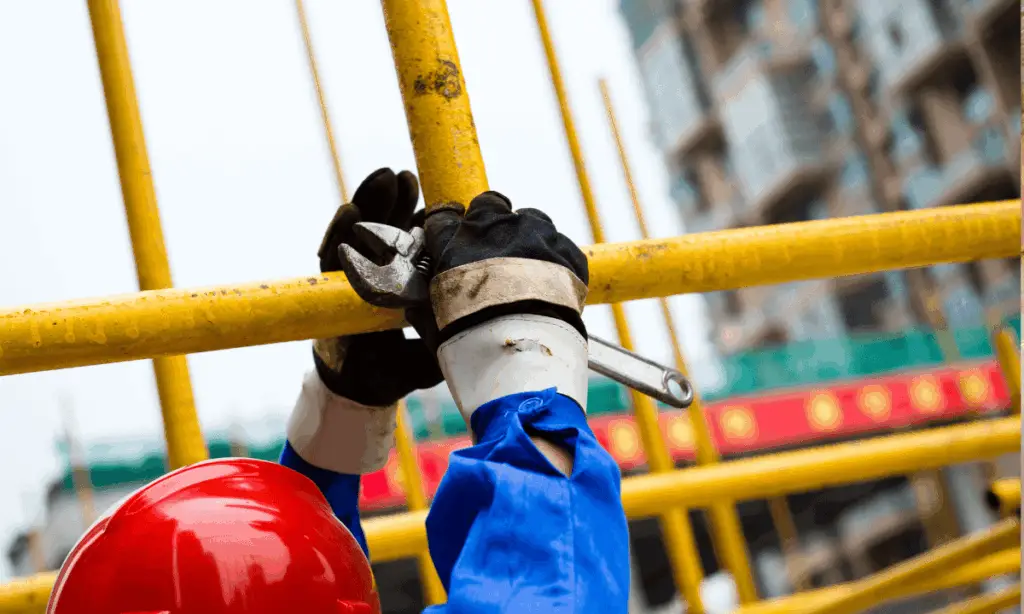
Am I Eligible to Make a Crush Injury Compensation Claim?
If you’ve suffered a crush injury in the workplace, you may be entitled to compensation under NSW workers compensation laws. To determine your eligibility, it’s important to understand the legal criteria, timelines, and evidence required to lodge a successful crush injury compensation claim.
Who Can Make a Crush Injury Claim in NSW?
In NSW, most employees, including full-time, part-time and casual workers, are covered under the state’s workers compensation scheme. If your crush injury occurred at work or while performing a work-related duty, you are likely eligible to make a claim.
Even if you’re a contractor or working through an agency, you may still qualify if the nature of your employment meets certain criteria under NSW law.
When Is a Crush Injury Considered Work-Related?
For a crush injury claim to be accepted, the injury must have occurred during the course of employment. This includes injuries that happen:
On the job site or in the workplace
During work hours
While operating machinery or performing assigned tasks
While travelling in the course of work
What Evidence Do You Need for a Successful Crush Accident Compensation Claim?
Strong documentation is critical to a successful crush injury workers compensation claim. To make a successful workers compensation claim, you’ll generally need:
A detailed medical report outlining the injury and its impact
An incident report from your employer or workplace
Witness statements, if available
Proof of lost income and expenses (e.g., payslips, receipts)
Any photos or CCTV footage of the incident (if applicable)
Unsure how to build your workers compensation case? Our experienced team of crush injury lawyers can guide you through the entire process, from gathering evidence, dealing with insurers, and maximising your entitlements from start to finish. We offer a free claim assessment, and our fees are covered by the Independent Review Office (IRO) so you pay nothing to make a claim.
Contact our workers compensation lawyers today to see how we can help you secure the compensation you deserve.
What Compensation is Available for Crush Injuries?
If you’ve suffered a crush injury in the workplace, you’re likely entitled to various forms of financial support under NSW workers compensation law. The extent of your entitlements depends on the severity of your injury, how it affects your ability to work, and whether it results in long term impairment. Understanding your options is key to ensuring you receive the full crush injury compensation you’re entitled to.
Workers Compensation Benefits for Crush Injuries
Under the NSW workers compensation scheme, you may be eligible to receive:
✅ Income Support: Weekly payments based on a percentage of your pre-injury earnings.
✅ Medical Treatment Expenses: Covering doctor visits, hospital stays, surgeries, and prescribed medications.
✅ Travel Expenses: Reimbursement for travel to and from medical appointments.
✅ Return-to-Work Services: Rehabilitation and vocational training to help you re-enter the workforce.
These benefits are designed to ease the financial pressure during your recovery and help you get back on your feet after a workplace crush injury.
Lump Sum Payments for Permanent Impairment
If your crush injury has caused permanent damage, you may also be entitled to a lump sum compensation payout under the NSW workers compensation system. This type of payment is awarded when a worker is assessed as having a permanent impairment that meets certain legal thresholds.
Whole Person Impairment (WPI) Requirements
To qualify for a lump sum payment, your injury must be assessed by an approved medical specialist, who will determine your Whole Person Impairment (WPI) rating. The WPI reflects the severity and long-term impact of your injury on your overall physical and psychological function.
For physical injuries (such as amputations, nerve damage, chronic pain, or loss of mobility), you must have a WPI of at least 11%.
For psychological injuries (such as PTSD, anxiety disorders, or depression resulting from the incident), a WPI of 15% or higher is required.
Eligibility Requirements for a Crush Injury Lump Sum Payment
To claim this lump sum, you must meet the following conditions:
Your injury is work-related and accepted under the NSW workers compensation scheme.
A permanent impairment has been medically stabilised and assessed by an accredited specialist.
Unsure about your Whole Person Impairment (WPI) assessment? Our team can arrange the assessment for you, explain what to expect, and make the entire process straightforward. Contact us today so you can focus on recovery while we handle the paperwork and maximise your entitlements.

Average Compensation Payouts for Crush Injuries
The amount of crush injury compensation you may receive in NSW depends on several key factors, including the severity of the injury, the part of the body affected, and the long term impact on your ability to work. While every case is different, understanding how payouts are typically calculated can help set realistic expectations and prepare you for the claims process.
What Factors Influence a Crush Injury Payout?
Several factors can affect the value of a crush injury compensation payout, including:
The extent of your physical and psychological injuries
Time off work and loss of future earning capacity
Medical and rehabilitation expenses
Permanent disability or reduced function
Ongoing pain, trauma, and mental health conditions
Whole Person Impairment (WPI) rating
Common Crush Injury Payouts in NSW
While each case is assessed individually, here are common payout ranges that we have seen in settlements involving crush injuries at work:
Minor Crush Injuries (e.g. soft tissue damage, short-term time off work):
Up to $30,000Moderate Crush Injuries (e.g. broken bones, surgery required, limited permanent damage):
$30,000 to $75,000Severe Crush Injuries (e.g. amputations, nerve damage, permanent disability):
$75,000 to $250,000+
These amounts may include weekly compensation payments, medical reimbursements, and lump sum payments for permanent impairment. If a Total and Permanent Disability (TPD) Claim or Work Injury Damages Claim is also applicable, the total compensation may be significantly higher.
| WPI % | Amount Payable |
|---|---|
| 11 | $29,510 |
| 20 | $64,250 |
| 30 | $102,850 |
| 40 | $166,180 |
| 50 | $229,680 |
| 60 | $405,790 |
| 70 | $581,760 |
As of July 1, 2025, the maximum workers compensation payout for a crush injury is $757,760.
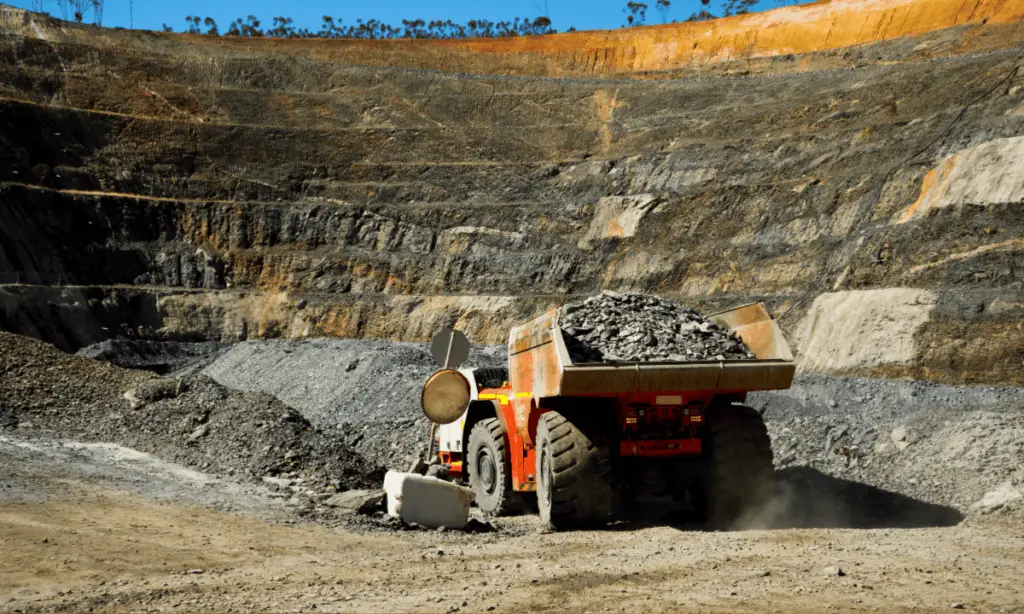
How to Make a Crush Injury Compensation Claim in NSW
If you’ve suffered a crush injury at work, it’s essential to take the right steps early to protect your health and your legal rights. Lodging a successful crush injury compensation claim in NSW involves these key steps:
If you’ve suffered a crush injury at work, one of the most important first steps is to see your GP. This not only ensures your injury is properly treated but also plays a crucial role in the success of your workers compensation claim. Here’s how your GP can support your legal and recovery journey:
Diagnose Your Injury
Your doctor will assess the severity of your crush injury, including any broken bones, nerve damage, or loss of function. This initial medical evaluation is critical to understanding the full impact of the injury and documenting it for your claim.
Establish the Workplace Connection
To support your crush injury compensation claim, your GP must clearly link your injury to a workplace incident. This includes recording how the injury occurred, any machinery or equipment involved, and the circumstances of the accident. This documentation is essential for your claim to be accepted.
Obtain a Work Capacity Certificate
Your GP will also complete a Work Capacity Certificate, which outlines your diagnosis, the extent of your injury, any physical restrictions, and whether you’re fit to return to work. This certificate is a key requirement when submitting your workplace crush injury claim through the NSW workers compensation system.
Taking these steps with your GP helps ensure you receive appropriate treatment while also building a strong foundation for your crush injury workers compensation claim.
It’s essential to notify your employer about your crush injury as soon as possible. Prompt and accurate reporting ensures they can notify their workers compensation insurer, which is a critical step in starting your crush injury compensation claim. Delays in reporting may affect your entitlements or lead to disputes during the claims process.
After notifying your employer about your crush injury, the next step is to submit your claim to their workers compensation insurer. To strengthen your claim and avoid delays, it’s important to include all required documentation. Here’s what you’ll need:
1 – Completed Workers Injury Claim Form:
The Workers Injury Claim Form outlines how your crush injury occurred, the type of compensation you’re seeking, and your personal and employment details. Be as clear and accurate as possible.
2 – Work Capacity Certificate and Medical Reports:
Attach your Work Capacity Certificate from your GP, along with any supporting medical documentation or specialist reports. These should detail the extent of your injury, how it affects your ability to work, and the connection to your workplace incident.
3 – Relevant Workplace Evidence:
Include incident reports, photos, witness statements, and any emails or documents that show how the injury occurred. These support your case and help demonstrate liability or unsafe work conditions.
By submitting these materials to the insurer, you take a key step toward securing your crush injury compensation. Making sure your paperwork is complete and accurate improves your chances of a faster approval and a stronger payout. If you’re unsure how to prepare your claim, Withstand Lawyers can guide you through every step.
Once you’ve submitted your claim, the insurer will assess it to decide whether to approve or deny your request for compensation. During this process, they may reach out to your healthcare providers, employer, or other relevant parties to gather additional information about your condition and its link to your workplace.
If the insurer approves your claim, you’ll start receiving workers’ compensation entitlements, which may include:
- Weekly Payments: if your occupational asthma prevents you from working.
- Medical Expense Coverage: for treatments, medications, and therapies related to your condition.
- Rehabilitation Services: assistance with recovery or transitioning to a different role if needed.
The type and amount of compensation you receive will depend on the severity of your crush injury, its long-term impact, and your ability to return to work. In more serious cases, you may also be eligible for a lump sum payment for permanent impairment or additional compensation through TPD or common law claims.
If your claim is denied, you still have options. Contact our workers compensation lawyers today to find out how we can help you take the next steps towards fair compensation for your workplace crush injury.
Common Law Compensation for Crush Injuries Caused by Workplace Negligence
If your crush injury was caused by your employers negligence, you may be entitled to common law damages (a payout) in addition to workers compensation. A common law claim, also known as a work injury damages claim, allows you to claim compensation for past and future economic loss beyond the capped benefits available through the standard workers compensation system.
What Is a Common Law Claim?
A common law claim, also known as a work injury damages claim, is legal action brought against a negligent party when their failure to provide a safe work environment led to your injury. Unlike statutory workers compensation, which is a no-fault scheme, a common law claim requires you to prove that your injury occurred due to negligence or breach of duty of care.
Examples of negligence that may lead to a crush injury include:
Failure to provide safety guards on machinery
Lack of proper training or supervision
Ignoring safety protocols or hazard reports
Unsafe worksite conditions or equipment defects
What Can You Claim?
Common law damages (a payout) for crush injuries typically include:
✅ Past economic loss: income lost due to time off work since the date of the crush injury
✅ Future economic loss: projected loss of earnings if you’re unable to return to your previous role or capacity. This takes into account the worker’s age, pre-injury earning capacity, and time left until retirement.
✅ Loss of superannuation: compensation for missed super contributions due to reduced or lost income
Unlike statutory workers compensation payments, common law damages are uncapped and often result in significantly higher compensation, especially in cases involving permanent impairment or loss of career.
While a common law claim can provide a larger lump sum to compensate for economic losses, it’s important to understand that you’ll no longer have access to ongoing workers compensation support once the claim is resolved.
Making a common law claim requires careful consideration of your financial needs and future well-being. Our experienced work injury damages lawyers are here to guide you every step of the way. We’ll explain your entitlements in clear, straightforward terms so you can make an informed decision that’s right for your future. Call us today on 1800 952 898 to learn how to best maximise your entitlements after a workplace crush accident.
Eligibility Requirements
To bring a successful common law claim for a workplace crush injury, you must meet specific legal requirements under NSW law:
Be assessed as having a Whole Person Impairment (WPI) of at least 15%
Prove that your injury was caused by someone else’s negligence
Proving negligence in a work injury damages claim is not always as straightforward as you may think. But at Withstand Lawyers, we have a proven track record of holding negligent parties accountable. If you believe your injury was caused by someone else’s failure to provide a safe workplace, we’re here to help you gather the necessary evidence to make a successful claim. Contact our trusted work injury damages lawyers today for a free claim assessment.
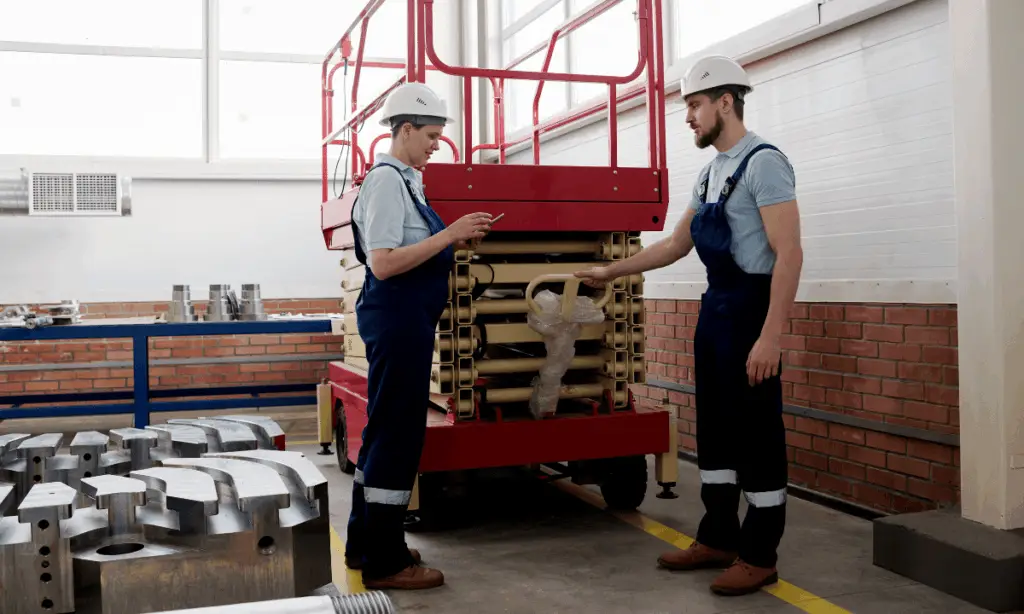
Making a TPD Claim for Crush Injuries
If a crush injury has left you unable to return to your job, or any job within your education, training, or experience, you may be eligible to make a Total and Permanent Disability (TPD) claim through your superannuation fund. A TPD claim is separate from your workers compensation entitlements and can provide a significant lump sum payment to support you financially into the future.
What Is a TPD Claim?
A TPD claim is an insurance benefit attached to most superannuation policies. It provides a lump sum payout if you are permanently unable to work due to injury or illness. Many people are unaware they have this coverage, but most employer super funds include it by default.
Crush injuries that result in severe physical limitations, amputations, or long-term psychological trauma often meet the eligibility criteria for a TPD payout.
Am I Eligible to Make a TPD Claim After a Crush Accident Injury?
To qualify for a TPD claim following a crush injury, you must generally meet the following conditions:
Be contributing to an active superannuation fund that includes TPD cover at the time of the accident
Be assessed as unable to return to your usual job or any job for which you’re reasonably qualified
Each fund may have slightly different definitions of “total and permanent disability,” so it’s important to review your policy carefully before you make a claim.
Unsure if you have TPD cover or if you’re eligible to make a claim? Our TPD lawyers have decades of experience securing the maximum TPD payout for injured workers. Contact us today for a free claim assessment to learn how we can handle your claim on a No Win No Fee basis.
What Evidence Do You Need for a TPD Claim?
Supporting documents for a TPD claim typically include:
Medical reports from treating specialists
Functional capacity evaluations
Statements from employers about your work duties and restrictions
Superannuation policy documents
Proof of identity and employment history
Crush injuries that affect mobility, cause chronic pain, or lead to psychological conditions like depression or PTSD often form a strong basis for a successful TPD claim.
Can You Claim Both TPD and Workers Compensation?
Yes, you can. A TPD payout does not affect your entitlement to workers compensation, and vice versa. In many cases, individuals injured at work make both types of claims to secure their financial future. TPD payouts can range from $50,000 to over $350,000, depending on your policy.
At Withstand Lawyers, we help injured workers navigate both systems to maximise their entitlements. We’ll deal with the superannuation fund, insurer, and all the paperwork so you don’t have to. Contact us today to see how we can help you claim compensation after a crush injury with no upfront fees on a No Win No Fee basis.
How Withstand Lawyers Help After a Crush Injury at Work
Navigating the workers compensation system can be overwhelming, especially when you’re dealing with the physical, emotional, and financial toll of a serious crush injury at work. That’s where Withstand Lawyers comes in.
Our team understands the complexities of crush injury compensation and the challenges injured workers face when dealing with insurers and medical recovery. Here’s how we help:
✅ Decades of experience handling workers compensation claims, including complex workplace crush injury claims across NSW
✅ Clear guidance at every stage, from claim lodgement to appeals and dispute resolution
✅ Maximising your entitlements, including weekly payments, medical costs, and lump sum compensation
✅ No win, no fee guarantee, so you pay nothing unless we win your case—ensuring access to justice without financial risk
At Withstand Lawyers, we’ve helped countless injured workers secure the crush injury compensation they deserve. We’re ready to help you do the same. Contact us today on 1800 952 898 or fill out our online form for a free claim assessment so you know where you stand.

Issa Rabaya
• Bachelor of Laws
• Graduate Diploma in Legal Practice
• Approved Legal Service Provider to the Independent Review Office
• Member of the Law Society

Issa Rabaya
• Bachelor of Laws
• Graduate Diploma in Legal Practice
• Approved Legal Service Provider to the Independent Review Office
• Member of the Law Society
Crush Injury Compensation FAQ's
A crush injury occurs when part of the body is compressed between two heavy objects, often causing damage to muscles, bones, nerves, or soft tissue. Common causes include machinery malfunctions, falling objects, and vehicle accidents in construction, warehousing, or industrial environments.
In NSW, claims generally must be lodged within six months of the injury or diagnosis.
Depending on your situation, you may still be eligible to make a claim beyond this time limit however. Contact our team today for a free claim assessment to know where you stand.
Yes, if your injury results in permanent impairment, you may be entitled to a lump sum compensation payment under NSW workers compensation law. A Whole Person Impairment (WPI) assessment will determine your eligibility. Our team can help you arrange an assessment. Contact us today to see how we can help.
Yes. NSW workers compensation is a no-fault scheme, meaning you can usually claim benefits even if your actions contributed to the accident.
Yes. TPD claims are separate to workers compensation, and one does not affect the other. Many clients who claim workers compensation for a crush injury are also elgible to make a TPD claim if they can no longer work in a job they have training or experience in.
If your workers compensation claim is rejected for your crush injury, you may have the right to challenge the decision.
Our workers’ compensation lawyers can assist you with an appeal. Contact us today for a free claim assessment.
No Win, No Fee means you don’t pay any legal fees unless your case is successful. This means you can access legal help for your crush injury compensation claim without any upfront costs.
And for workers compensation claims, our fees are covered by the Independent Review Office (IRO), so you won’t have our fees deducted from your settlement.
Yes. If your crush injury occurred while you were working, even if symptoms worsened or were diagnosed after retirement, you may still be eligible to make a workers compensation claim. This includes long-term or delayed conditions that develop over time due to past workplace incidents. Contact our team today for a free claim assessment to see what you could be eligible to claim.


